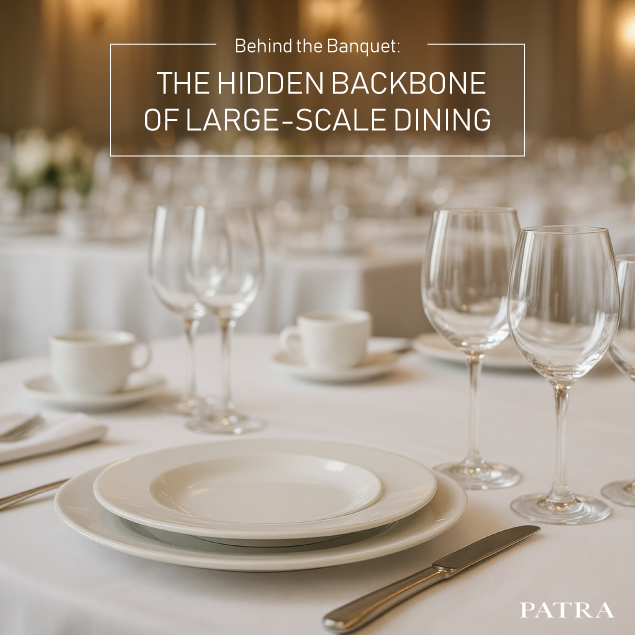When it comes to choosing high-quality tableware, most people focus on design, weight, or brand. But for professionals in the hospitality or design industries, there’s a lesser-known yet crucial factor that defines the durability and performance of ceramic tableware: firing temperature.
What Is Firing Temperature?

Firing temperature refers to the heat level at which ceramic materials are baked in a kiln to transform them from a raw, fragile form into a finished, vitrified product. This process affects not just the strength and hardness of the tableware, but also its color, translucency, and resistance to wear.
Porcelain vs. Bone China: What’s the Difference?
Both porcelain and bone china belong to the same ceramic family, but their typical firing profiles set them apart in significant ways:
| Feature | Porcelain | Bone China |
| Firing Temperature | ~1,300°C | ~1,200–1,250°C |
| Finish | Hard, glass-like | Smooth, creamy-white |
| Translucency | Moderate | High |
| Durability | High impact resistance | Delicate appearance, still durable |
Why Firing Temperature Matters
1. Durability & Strength
Higher firing temperatures lead to greater vitrification (the process of making the ceramic non-porous). This makes porcelain especially suitable for high-volume commercial use like in hotels, airlines, and restaurants. It can handle:
- Sudden temperature changes
- Frequent dishwashing
- Daily stacking and handling
2. Surface Hardness
The intense heat used in porcelain firing creates a harder glaze surface that is:
- More resistant to scratches
- Less likely to absorb stains or odors
- Easier to sanitize
Bone china, while fired at slightly lower temperatures, achieves its strength through its bone ash content, which allows it to maintain thin, elegant profiles without compromising on chip resistance.
3. Aesthetic & Finish
Firing also affects how glazes and decorations react. High-temperature porcelain often results in:
- Crisp whites
- Subtle glaze textures
- Stable underglaze color performance
Bone china’s lower firing temperature allows for more intricate overglaze designs and greater translucency, making it a favorite for fine dining and luxury hospitality.
What Professionals Should Know
Whether you’re sourcing tableware for a luxury hotel or curating products for your design collection, knowing how firing temperature affects performance can help you:
- Choose the right material for high-use vs. formal settings
- Understand why some pieces feel heavier or harder
- Evaluate long-term cost-efficiency in tableware investment
Final Thoughts
The beauty and performance of porcelain and bone china go far beyond their appearance. Behind each piece is a precisely calibrated firing process that determines its strength, durability, and character. By understanding the science behind the fire, professionals can make better, more informed decisions for every table setting.


